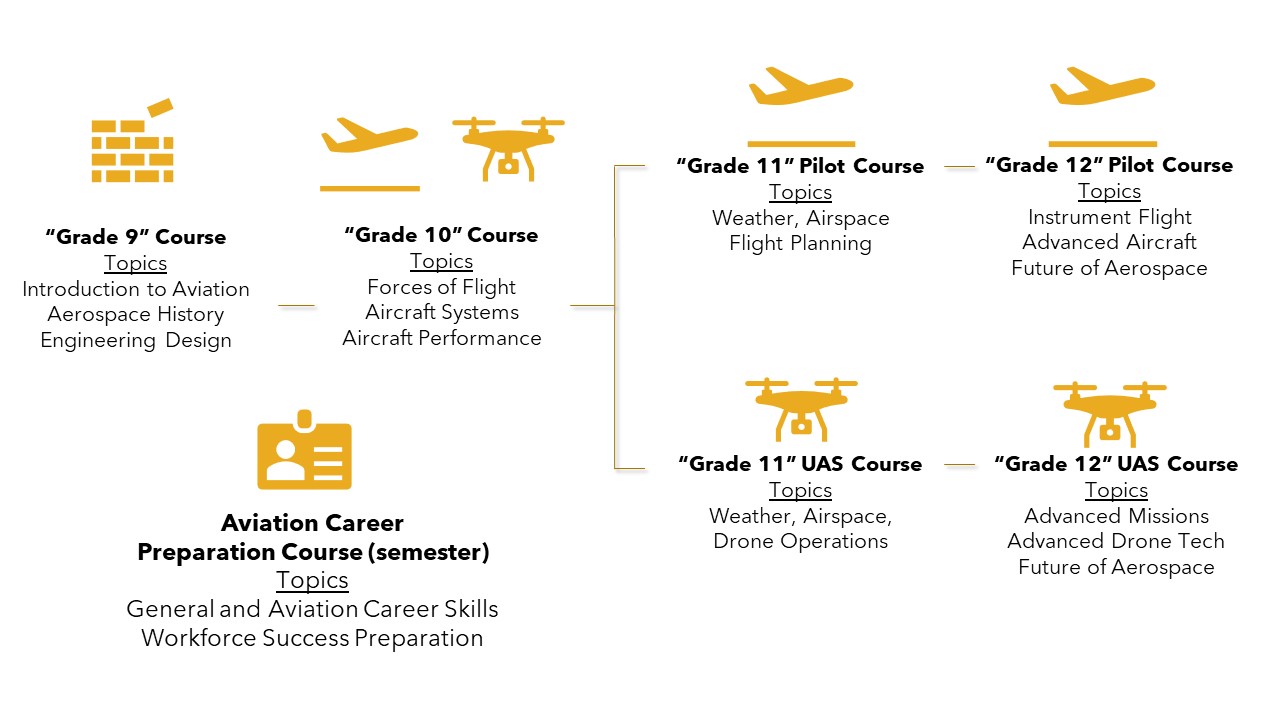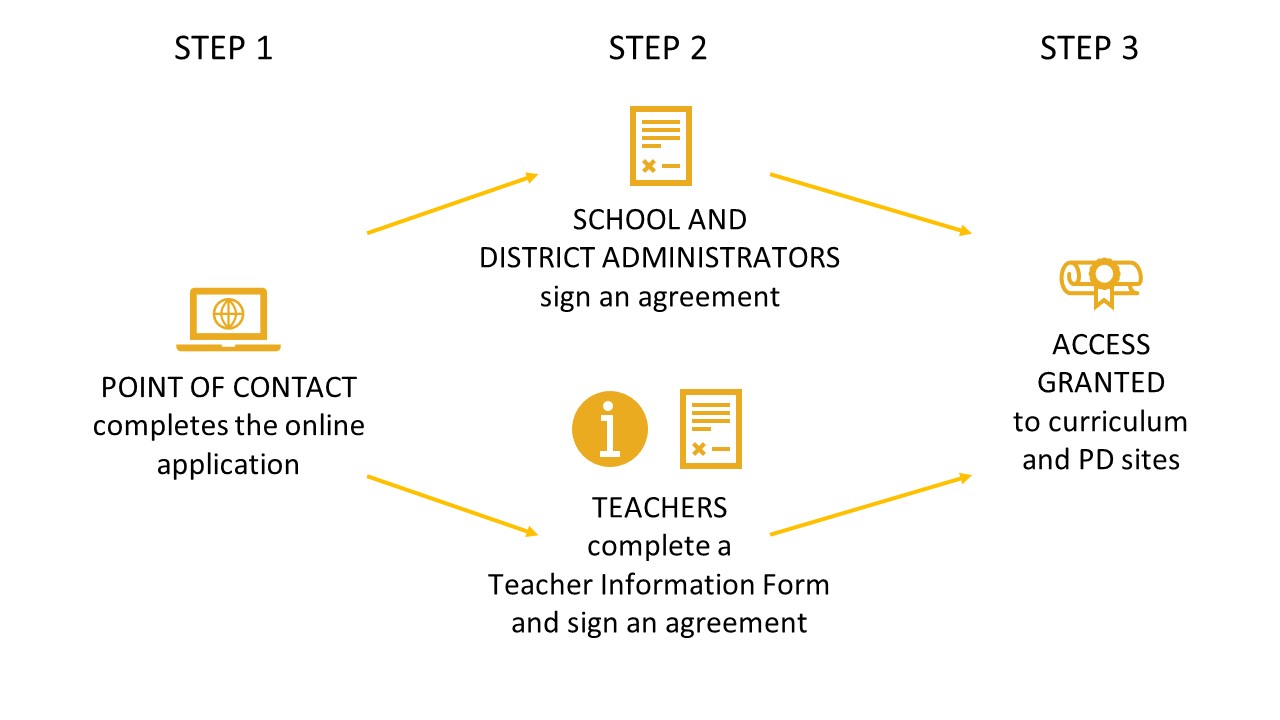
Boeing's Pilot and Technician Outlook report predicts a need for over 600,000 new pilots and 700,000 new technicians in the next 20 years. To meet this demand, the AOPA Foundation created the High School Aviation STEM Curriculum, unlocking pathways to aviation careers for thousands of teens. This STEM.org-reviewed educational resource is available for free to U.S. schools, districts, nonprofits, and homeschool co-ops. Download samples of our 9th through 12th-grade curriculum materials to learn more.
According to Boeing's Pilot and Technician Outlook, the world will need over 600,000 new pilots and nearly 700,000 new technicians in the next 20 years. Schools and districts nationwide must prepare students for these high-paying, rewarding careers in aviation and aerospace.
In response, the AOPA Foundation, the philanthropic arm of AOPA, the world's largest aviation community, created the AOPA Foundation High School Aviation STEM Curriculum, unlocking pathways to aviation careers for thousands of teens.
This STEM.org-reviewed educational resource is available free of charge to U.S. schools, districts, nonprofits, and homeschool co-ops.
We offer a menu of seven courses in two aviation STEM career and technical education (CTE) pathways: Pilot and Unmanned Aircraft Systems (drones). You can offer one, some, or all courses in any school year to match your program goals and students' needs.

With each course, you receive a turn-key set of high-quality instructional and assessment resources:
We also offer initial and ongoing professional development:
Reminder: The AOPA Foundation High School Aviation STEM Curriculum is FREE thanks to AOPA Foundation donors.
Complete the form below to access comprehensive samples of our 9th through 12th-grade curriculum materials, including course descriptions and outlines, lesson plans and activities, teacher presentations and student materials, and more.
AOPA uses the information you provide to us to contact you about our relevant content, products, and services. You may unsubscribe from these communications at any time. For more information, check out our privacy policy.

The AOPA Foundation provides the curriculum at no charge. In return, participating programs commit to specific criteria. Criteria with asterisks may be waived by Kentucky-based programs for the Kentucky Career Preparation Course only.
The AOPA Foundation reserves the right to approve schools to use the High School Aviation STEM Curriculum.
We require programs to periodically report aggregated program enrollment, graduation, and career intention data. Data reporting demonstrates the impact of our curriculum to our donors and funders and keeps the program free to all.
IMPORTANT: We never ask for personally identifying student information. Additionally, we will never report information that can be identified as belonging to a single program.
The curriculum is FREE.
Online professional development and initial and ongoing teacher and program support are also FREE.
We keep the curriculum free through the generous donations of our members and the aviation community. Our funders want to know the impact of their donations. We measure the impact through periodic data collections from programs that use the Curriculum. The application process includes a signed agreement that schools submit periodic aggregated enrollment, graduation, and career intention data as a requirement for continued curriculum access.
Who is eligible to teach the curriculum is up to your program's leadership to decide based on applicable state teacher certification requirements for the specific academic program in which the courses will be taught.
You don't need to be a pilot to teach the curriculum. Teachers from all subject areas successfully teach the AOPA Foundation Curriculum.
The lessons are turnkey, and include highly detailed lesson plans and PowerPoint presentations that give teachers everything they need to implement successful instruction.
The AOPA Foundation also helps all teachers grow in their capacity to teach the curriculum. We provide teacher training and access to multiple online professional development resources FREE OF CHARGE to assist teachers in increasing their aviation knowledge and skills.
The lessons are built based on increments of 50-minute sessions. Each lesson plan identifies how many sessions that lesson entails.
In total, one year's worth of curriculum provides the equivalent of 140 50-minute class sessions of content. This allows a teacher to extend the time as needed, participate in field trips, or allow time for school-related activities.
The courses are taught nationwide in programs with many different scheduling options, including traditional 40-50 minute class sessions, 70-100 minute block schedules, and half-day and full-day sessions one to two days per week. Some programs even teach for two to five hour blocks every day, permitting them to complete multiple courses in one year.
Each semester course provides a pre-and post-assessment. Additionally, formative and summative assessments, quizzes, unit tests, and project rubrics are provided.
The curriculum is designed with cost in mind, as it is important to us to deliver high-quality lessons within every school's budget. Regardless of which course your school is considering, all materials required for projects can be supplied to a class of 20-25 students for approximately $1,500 to $2,000. These materials can be purchased online or at big box and home improvement stores. While simulators (airplane or drone) are not required to teach the courses successfully, every course allows schools to take advantage of any available simulation equipment. For schools teaching the UAS pathway (available in 11th or 12th grade), at least one small UAS (drone) will be essential, along with batteries and other accessories. Small drones ideal for classroom instruction can be purchased online for approximately $100
Any program providing high school credit can use our curriculum as part of its credit-bearing course offerings.
Schools and districts of all types - including but not limited to public, private, parochial, and charter schools - use the curriculum.
Career and technical centers across the country use the curriculum as approved CTE pathways.
Middle and junior high schools that award high school credit for the courses use the curriculum.
Home school co-op programs and nonprofit organizations with educational programs that meet the criteria, including offering high school credit to five or more students per class offered, are also eligible.
Not sure if your program is eligible? Email us at [email protected] to discuss.
Our curriculum is structured to be delivered by a teacher. It includes multiple hands-on engineering design activities. It is not structured for independent learners.
Lesson materials are delivered electronically to teachers through the AOPA Foundation website.
Teachers may use learning management systems to deliver curriculum material to their students. This form of delivery is acceptable, provided the school adheres to the "No Changes and Non-Disclosure" requirements in this page's Selection Criteria and Requirements section.
At this time, we are only accepting programs using selected courses in their entirety as high school credit-bearing courses.
If you are interested in starting an after-school program or aviation club, please contact Jamie Beckett, AOPA Foundation Aero Club Liaison, at [email protected]. Jamie is an expert at helping start and grow aviation-based after-school and club-based programs.
Curriculum access is granted one school year at a time. A simple renewal form will be sent to the Point of Contact at an appropriate time for schools to renew for the following school year.
The program, including participating teachers and administrators, shall not in any circumstance edit, alter, share, disseminate, or otherwise distribute the AOPA Foundation High School Aviation STEM Curriculum (in whole or in part, or digital or print formats) to other non-participating programs (at any level), organizations, and/or teachers.
We recognize that teachers are professionals who understand their students' strengths, weaknesses, and needs. They have the flexibility to creatively apply their pedagogical and content knowledge to deliver high-quality instructional activities, all while adhering to the curriculum.
Please note: The curriculum materials provided on this website are subject to change.
The AOPA Foundation, a 501(c)(3) charitable organization and the philanthropic wing of the Aircraft Owners & Pilots Association (AOPA), is instrumental in propelling general aviation forward through two vital initiatives: You Can Fly, which aims to make flying more accessible and affordable, and the AOPA Air Safety Institute, dedicated to enhancing aviation safety through education and training.